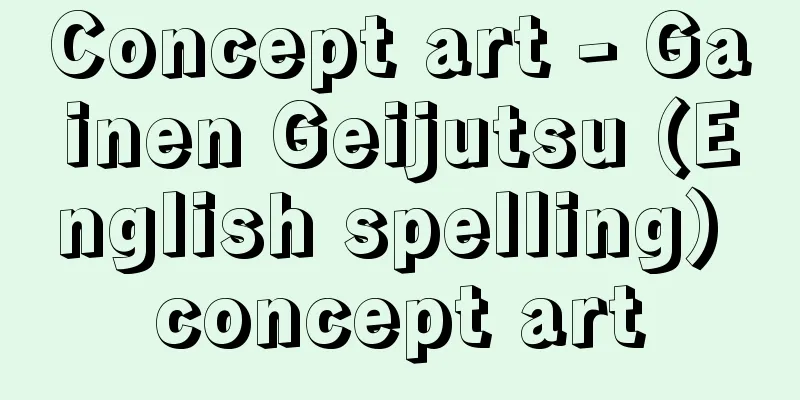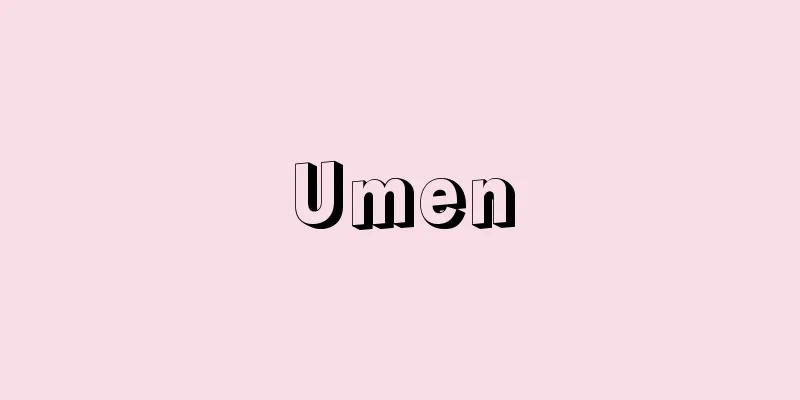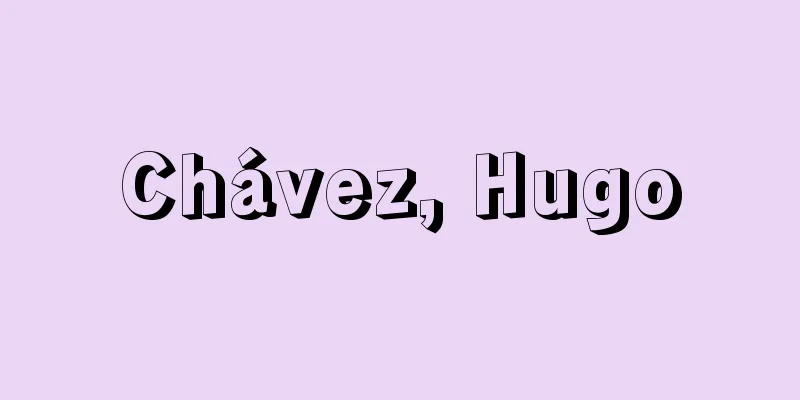Concept art - Gainen Geijutsu (English spelling) concept art

|
In Japan, it is often called conceptual art. It is a trend that became mainstream in Western art for about 10 years from the mid-1960s, following Neo-Dada, Anti-Art, and Pop Art. The fundamental idea of conceptual art is to break away from traditional genre divisions and production concepts and to limit art to the concept of art. This leads to the idea that whatever the artist calls art, it is art, and that art is the definition of art. Source: Heibonsha World Encyclopedia, 2nd Edition Information |
|
日本ではコンセプチュアル・アートということが多い。ネオ・ダダ,反芸術,ポップ・アートのあと,1960年代半ばからほぼ10年間,欧米の美術で主流をなした傾向をいう。概念芸術の根本的な考え方は,従来のジャンル区分,制作概念を離れて,芸術を〈芸術という概念〉にまで極限化しようとするところにあった。そこから,何であれ〈芸術家がそれを芸術と呼べば,それが芸術である〉〈芸術とは芸術の定義である〉という考え方にまで至ることになる。
出典 株式会社平凡社世界大百科事典 第2版について 情報 |
<<: Conceptual theory - Begriffsjurisprudenz (German: Begriffsjurisprudenz)
>>: Concept - Gainen (English spelling) concept (English/French), Begriff (German)
Recommend
Name book - Meichou
[noun] 1. Under the Ritsuryo system, a list of off...
Oleyl alcohol
C18H36O (mw268.48). CH3 ( CH2 ) 7CH =CH( CH2 ) 7CH...
Hong Duc (English)
…The fourth emperor of the Le Dynasty in Vietnam,...
Angwantibo - Angwantibo (English spelling)
It is an animal of the Loris family in the Primat...
Orange Bitter
…It is often called bitters in the singular form....
A Passage to India
A full-length novel by British author E.M. Forste...
Red boxwood - Red boxwood
An evergreen shrub of the family Ilex (APG classi...
Canadian National Railway [company] - Canadian National Railway
Based on the Canadian National Railways Act of 192...
Feodosii
…In the second half of the 15th century, he devel...
FIG - F.I.G.
(France) Fédération Internationale de Gymnastique ...
Tricyrtis ishiiana (English spelling)
…[Hiroshi Takahashi]. … *Some of the terminology ...
Backside Japan Climate - Backside Japan Climate
→Japan Sea climate Source: Shogakukan Encyclopedi...
dotted print
…Relief printing is an exception, being limited t...
bandeau
…The original meaning is shoulder straps. It is a...
Prunus ssiori (English spelling) Prunusssiori
…[Hiroshi Aramata]. … *Some of the terminology th...









